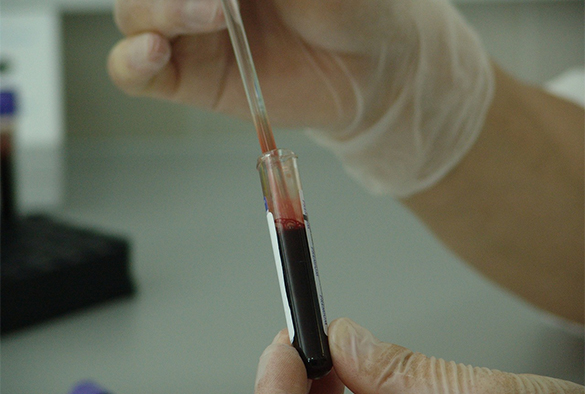First application of the BIANCA biophysical model to carbon-ion patient cases

Former OMA Fellow Giulia Arico and colleagues have published an article in Physics in Medicine And Biology reporting the first application of the BIANCA (BIophysical ANalysis of Cell death and chromosome Aberrations) biophysical model to carbon-ion patients.
The main objective of the work consisted of applying, for the first time, the BIANCA biophysical model to the relative biological effectiveness (RBE) calculation for C-ion cancer patients, and comparing the outcomes with those obtained by the LEM I model, which is applied in clinics.
Indeed, the continuous development of heavy-ion cancer therapy requires modelling of biological effects of ion beams on tumours and normal tissues. The RBE of heavy ions is higher than that of protons, with a significant variation along the beam path. Therefore, it requires a precise modelling, especially for the pencil-beam scanning technique.
Currently, two radiobiological models, LEM I and MKM, are in use for heavy ions in scanned pencil-beam facilities. Utilizing an interface with the FLUKA Particle Therapy Tool, BIANCA was applied to re-calculate the RBE-weighted dose distribution for carbon-ion treatment of three patients (chordoma, head-and-neck and prostate) previously irradiated at CNAO, where radiobiological optimization was based on LEM I.
The predictions obtained by BIANCA were based either on chordoma cell survival (RBEsurv), or on dicentric aberrations in peripheral blood lymphocytes (RBEab), which are indicators of late normal tissue damage, including secondary tumours. The simulation outcomes were then compared with those provided by LEM I.
While in the target and in the entrance channel BIANCA predictions were lower than those obtained by LEM I, the two models provided very similar results in the considered OAR. The observed differences between RBEsurv and RBEab (which were also dependent on fractional dose and linear energy transfer (LET) suggest that in normal tissues the information on cell survival should be integrated by information more closely related to the induction of late damage, such as chromosome aberrations.
This work showed that BIANCA is suitable for treatment plan optimization in ion-beam therapy, especially considering that it can predict both cell survival and chromosome aberrations and has previously shown good agreement with carbon-ion experimental data.
Full article:
Kozlowska, Wioletta S.; Carante, Mario P.; Arico, Giulia; Embriaco, Alessia; Ferrari, Alfredo; Magro, Giuseppe; Mairani, Andrea; Ramos, Ricardo; Sala, Paola; Georg, Dietmar; Ballarini, Francesca, “First application of the BIANCA biophysical model to carbon-ion patient cases”, PHYSICS IN MEDICINE AND BIOLOGY 67(11), 115013 (2022) https://doi.org/10.1088/1361-6560/ac702b